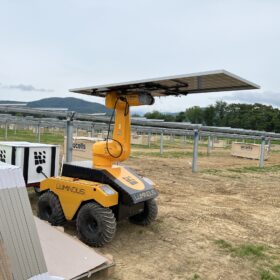The Australian Industry Energy Transitions Initiative (Australian Industry ETI) has published the Pathways to Industrial Decarbonisation Phase 3 reports.
The reports identify decarbonisation pathways for five high emissions supply chains: iron and steel, aluminium, other metals, chemicals, and liquefied natural gas (LNG).
Together, these industries account for an estimated 25 per cent of Australia’s greenhouse gas emissions, while generating more than 17.3 per cent of Australia’s GDP and employing an estimated 414,000 people.
The Australian Industry ETI is convened by Climateworks Centre and Climate-KIC Australia, with the support of the Energy Transitions Commission (ETC), and is comprised of 18 of Australia’s largest businesses. Collectively, Australian Industry ETI partners represent over 30 per cent of the ASX100 market capitalisation.
The Australian Renewable Energy Agency (ARENA) has supported the Australian Industry ETI since its inception, providing $300,000 for its establishment and a further $2 million towards delivery of Phases 2 and 3.
With the input of these businesses, and research partners CSIRO, BloombergNEF, ETC and RMI, the main report found that existing and emerging technologies have the potential to reduce emissions from these supply chains in line with a 1.5° warming scenario if strong, effective, and coordinated action across all sectors of Australia’s economy is achieved.
This is supported by the companion technical and jobs reports, which supplement the main report with in-depth modelling and analysis.
Consistent with ARENA’s strategic focus, the reports found that renewable hydrogen will be a significant emissions reduction tool across heavy industry, as well as electrification, energy efficiency and biofuels. Mechanical vapour recompression will also play a key role in reducing emissions from the aluminium supply chain.
In addition to reducing industrial emissions, the reports found that key decarbonisation technologies – such as large-scale hydrogen production and load balancing – could potentially lead to lower electricity system costs.
This transition will need to be underpinned by a significant step change in renewable generation and storage entering the grid. This includes a doubling Australia’s current electricity generation, delivered by 80 GW of wind 90 GW of large scale solar.
ARENA CEO Darren Miller said the reports provide valuable insights into the pathway to reducing emissions from industry.
“We know we face a significant challenge in reducing emissions from heavy industrial processes, and through this collaboration and vital work, the Australian Industry ETI is showing what is needed to address this imperative and work towards the common goal of zero net emissions.
“Close industry collaboration is essential in these hard-to-abate sectors and the Australian Industry ETI provides a blueprint for how this can be done. It’s a testament to what can happen when business, finance, government and the not-for-profit sector come together to tackle this critical problem.”
The Phase 3 reports and prior reports produced by the Australian Industry ETI can be found on ARENA’s Knowledge bank.
The Australian Industry ETI’s full list of business program participants are: Australian Gas Infrastructure Group, APA Group, Aurecon, AustralianSuper, BHP, BlueScope Steel, bp Australia, Cbus, the Clean Energy Finance Corporation, Fortescue Metals Group, HSBC, Orica, National Australia Bank, Rio Tinto, Schneider Electric, Wesfarmers Chemicals, Energy & Fertilisers, Westpac and Woodside Energy, supported by Aigroup and AIGN.






By submitting this form you agree to pv magazine using your data for the purposes of publishing your comment.
Your personal data will only be disclosed or otherwise transmitted to third parties for the purposes of spam filtering or if this is necessary for technical maintenance of the website. Any other transfer to third parties will not take place unless this is justified on the basis of applicable data protection regulations or if pv magazine is legally obliged to do so.
You may revoke this consent at any time with effect for the future, in which case your personal data will be deleted immediately. Otherwise, your data will be deleted if pv magazine has processed your request or the purpose of data storage is fulfilled.
Further information on data privacy can be found in our Data Protection Policy.